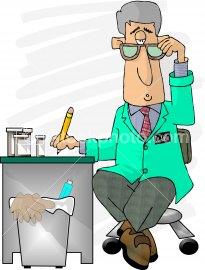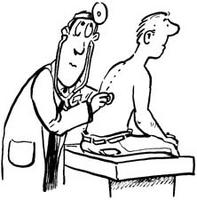Coming Soon.......
Life Coaching.... A new means to achieving your goals.
Part II of the Series: So you want to open your own private practice.
A Solo Doc's attempt to make sense of the business of medicine while he grows (from its infancy) a primary care practice in the island of Manhattan.
 I asked the pharmacist at Duane Reade if they were SureScript ready, and she said yes, but that the system has its flaws..... Surprise, surprise.... I could not have guessed by looking at those old computer monitors that I once used back in the late 80's when learning what a computer was! Anyway, the program is unable to tell the pharmacist when a new prescription request has arrived. So it's basically relying on the pharmacist to check it periodically, which this pharmacist admitted does not happen all the time. Then, to receive a soon-to-be irate patient, arriving at the pharmacy, asking where their prescription is, and the pharmacist likely telling them they haven't received it because they are looking through their faxed requests, where the surescript prescription will not be. It still does not seem to be in the psyche of the pharmacists to check the computer, unless told to do so. So, it seems, that if you plan to switch to e-prescribing for greater ease of use, make sure you contact your most frequently visited pharmacies, and make them aware, as well as tell your patients to know how to ask for their prescription in order to avoid the very well-known scenario of the frustrated, angry patient calling your office asking where their prescription is. But just think, at least you can look forward to easily transmiting prescriptions electronically without consuming more than a minute of your time, when the hair on your back rises, as you hear the patient asking on the way out in the presence of a full waiting-room, "By the way, do you think you could call these scripts in for me?"
I asked the pharmacist at Duane Reade if they were SureScript ready, and she said yes, but that the system has its flaws..... Surprise, surprise.... I could not have guessed by looking at those old computer monitors that I once used back in the late 80's when learning what a computer was! Anyway, the program is unable to tell the pharmacist when a new prescription request has arrived. So it's basically relying on the pharmacist to check it periodically, which this pharmacist admitted does not happen all the time. Then, to receive a soon-to-be irate patient, arriving at the pharmacy, asking where their prescription is, and the pharmacist likely telling them they haven't received it because they are looking through their faxed requests, where the surescript prescription will not be. It still does not seem to be in the psyche of the pharmacists to check the computer, unless told to do so. So, it seems, that if you plan to switch to e-prescribing for greater ease of use, make sure you contact your most frequently visited pharmacies, and make them aware, as well as tell your patients to know how to ask for their prescription in order to avoid the very well-known scenario of the frustrated, angry patient calling your office asking where their prescription is. But just think, at least you can look forward to easily transmiting prescriptions electronically without consuming more than a minute of your time, when the hair on your back rises, as you hear the patient asking on the way out in the presence of a full waiting-room, "By the way, do you think you could call these scripts in for me?" took over our homeland and smoked it up real good! My father had attempted to start a company, but had to abandon the efforts due to the rapidly changing political climate. Approximately 10 years later, he got to live his dream. Having returned to the U.S. after a sojourn in several Latin American countries, he established his first elevator installation and maintenance company in the same month I was born. Whereas most small companies fail in the first five years, that company, and two others he started thereafter, thrived for the next 31 years, at which time he sold it.
took over our homeland and smoked it up real good! My father had attempted to start a company, but had to abandon the efforts due to the rapidly changing political climate. Approximately 10 years later, he got to live his dream. Having returned to the U.S. after a sojourn in several Latin American countries, he established his first elevator installation and maintenance company in the same month I was born. Whereas most small companies fail in the first five years, that company, and two others he started thereafter, thrived for the next 31 years, at which time he sold it. [and yes, at times, it felt like a cattle-call, calling 3-5 patients back at a time]-- with the endless stream of complaints from patients frustrated with the process, I knew I would enjoy a different patient care paradigm. This is not a criticism of that system, more so an insight into who I was. It was simply not the way I wanted to practice medicine. After all, I had become a primary care physician to care for people, really get to know them, and form enduring physician-patient relationships.
[and yes, at times, it felt like a cattle-call, calling 3-5 patients back at a time]-- with the endless stream of complaints from patients frustrated with the process, I knew I would enjoy a different patient care paradigm. This is not a criticism of that system, more so an insight into who I was. It was simply not the way I wanted to practice medicine. After all, I had become a primary care physician to care for people, really get to know them, and form enduring physician-patient relationships.  That's what medicine was all about for me, especially when choosing to pursue a career in primary care. Having decided that in spite of the alluring salary, this would not be my life, I was simultaneously mortified and delighted to hear from one of the partners, after 9 months of employment, that they would not be renewing my one-year term of employment. As Martha Stewart says on her version of "The Apprentice," I simply "did not fit in." It was the catalyst I needed. I was simply not willing to compromise my values in patient care. The truth is that as distraught as one may have been knowing that they were losing their job in another 3 months, after the initial shock wore off, I actually felt a sense of joy inside. This was the sign that I was on the right path. The possiblities were greater than working for somebody else. Now I had no choice but to charge forward into my future.
That's what medicine was all about for me, especially when choosing to pursue a career in primary care. Having decided that in spite of the alluring salary, this would not be my life, I was simultaneously mortified and delighted to hear from one of the partners, after 9 months of employment, that they would not be renewing my one-year term of employment. As Martha Stewart says on her version of "The Apprentice," I simply "did not fit in." It was the catalyst I needed. I was simply not willing to compromise my values in patient care. The truth is that as distraught as one may have been knowing that they were losing their job in another 3 months, after the initial shock wore off, I actually felt a sense of joy inside. This was the sign that I was on the right path. The possiblities were greater than working for somebody else. Now I had no choice but to charge forward into my future.  and obtaining the funds to finance the start of a new business [Yes, a private doctor practice is a b-u-s-i-n-e-s-s, and must be thought of as such!], nothing could be put into effect without a physical space. In our city [to be revealed later], medical office space is scarce and expensive. Albeit, I began the process of calling the major insurers, applying for privileges, and trusting that things would somehow work out. The funding was resolved with part loan and part angel investor. Starting off required a full-year's predicted expenses in loans. Wow! I had never dealt with that much money all at once. My heart nearly jumped, but a voice inside kept telling me this is it. Things seemed to be moving in the right direction, even when the road became quite bumpy. Luck was on my side! What is luck anyway(?), but the meeting of opportunity with preparation. I would say it was more opportunity first, and preparation that scrambled to catch up! It took a lot of hard work and preparation to reach that day doors opened for business. If capital were the only thing one needs to start a practice in medicine, then it would have been very easy. Determination, planning, flexibility, adaptability, and a willingness to keep going when things didn't turn out the way one expects -- the same character qualities that kept me going through premed, then medical school, then residency -- were being called into action once again to fulfill this dream. Perhaps an M.B.A. would have been useful, if I had the forethought. But there was no time to waste anymore. The time was ripe. The time was now!!
and obtaining the funds to finance the start of a new business [Yes, a private doctor practice is a b-u-s-i-n-e-s-s, and must be thought of as such!], nothing could be put into effect without a physical space. In our city [to be revealed later], medical office space is scarce and expensive. Albeit, I began the process of calling the major insurers, applying for privileges, and trusting that things would somehow work out. The funding was resolved with part loan and part angel investor. Starting off required a full-year's predicted expenses in loans. Wow! I had never dealt with that much money all at once. My heart nearly jumped, but a voice inside kept telling me this is it. Things seemed to be moving in the right direction, even when the road became quite bumpy. Luck was on my side! What is luck anyway(?), but the meeting of opportunity with preparation. I would say it was more opportunity first, and preparation that scrambled to catch up! It took a lot of hard work and preparation to reach that day doors opened for business. If capital were the only thing one needs to start a practice in medicine, then it would have been very easy. Determination, planning, flexibility, adaptability, and a willingness to keep going when things didn't turn out the way one expects -- the same character qualities that kept me going through premed, then medical school, then residency -- were being called into action once again to fulfill this dream. Perhaps an M.B.A. would have been useful, if I had the forethought. But there was no time to waste anymore. The time was ripe. The time was now!!